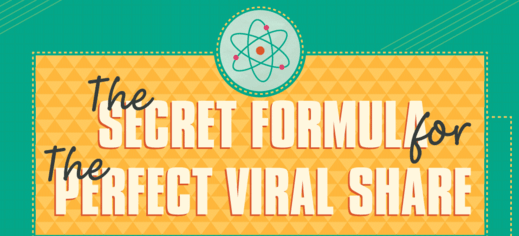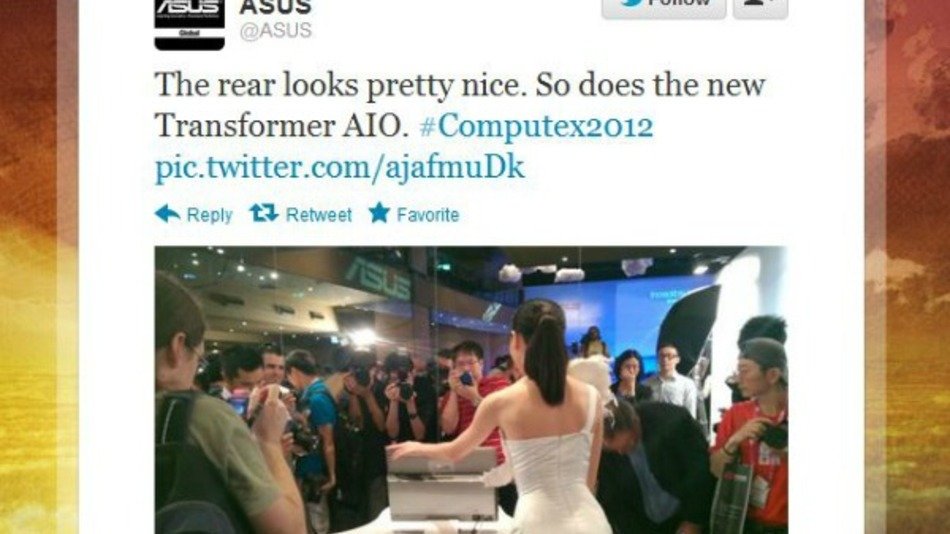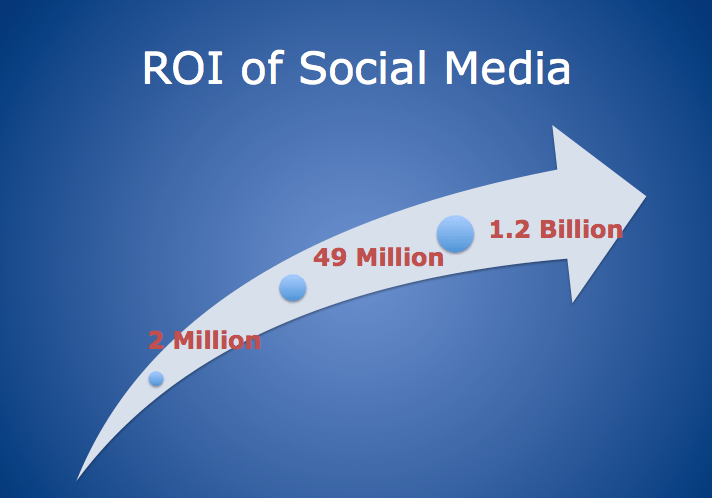
Also called buzz marketing, viral marketing gets its name because it spreads through a population much like a virus – from person to person. Viral marketing involves spreading your message quickly through your target market. Social media is considered a particularly fertile area for viral marketing because of the potential for engagement with your content to amplify your message. Viral marketing is basically WOM (Word of Mouth) on steroids that also increases the trustworthiness of your message when shared by friends.
However, viral marketing is a myth when it comes to building a sound digital marketing strategy. Yet, I hear this all the time from clients and prospects;
I want you to create a viral marketing campaign that’ll really send my brand over-the-top
The myth of viral marketing
OK, first, I can’t guarantee a post, white paper, image, infographic or another piece of content will go viral and no one else can either. Nobody can guarantee an action will generate viral marketing and, if they say they can, make them back it up with some money. In other words, require a substantial discount if their efforts don’t generate viral marketing results.
Of course, I can use elements “likely” to make a post go viral (and we’ll discuss these later in this post), but I wouldn’t want to bet real money on the whims of social media folks because any number of factors conspire to reduce the virality of your marketing strategy, including many that aren’t under your control.
A good example of a campaign that went viral is Roto Rooter’s Pimped Out John contest, depicted in the image below. The image is so outlandish, folks just HAD to talk about it. Users shared the heck out of the image, commented snarky things that generated more comments, and even the media picked up on the outlandish elements of this contest, garnering an estimated $1 million in free publicity according to the Marketing Director, who was surprised with the unexpectedly high results of the campaign.
Virality
Rather than perpetuating the viral marketing myth, let’s talk about virality — that’s the advice of successful journalist, Benny Johnson of Buzzfeed.
In his presentation, Benny said you can never predict which content will go viral (hence why I suggest the strategy of creating viral marketing is a myth). You can’t form a marketing plan around something so idiosyncratic.
Virality, to a large extent, is beyond your control because it depends a lot on serendipity, as I mentioned earlier. You might publish 100 pieces of really great content only to have some mediocre piece go viral, blowing all your notions that you control virality. Among the uncontrollable factors that contribute to virality, are:
- It’s a slow news day. I often see some virality around the holidays, when fewer brands publish content.
- Your post appeals to someone very influential. For instance, one of my posts caught the attention of Mari Smith, a Facebook influencer, for some unknown reason and she retweeted the content. Views of that piece of content when through the roof. The same thing happened recently when Google Analytics chose a post about their platform to retweet (see the Retweet below and pardon the bad crop job), despite ignoring numerous similar posts published before and after.
- Your post gets featured on an important site or covered in the media. Whenever my post gets featured on the front page at Business 2 Community, website visits spikes.
Certainly, creating great content increases the chances that your content goes viral, but it’s no guarantee.
The ROI of viral marketing
But, the bigger question is: When content goes viral, does it HELP your brand?
And, too often, the answer is: NO!
This brings me to the topic of today’s post: Myths about social media.
Next to the definition of myth in the dictionary, you’re likely to find the viral marketing myth. The viral marketing myth, believed by most digital marketers is so pervasive, I’ve even seen marketing materials touting the firm’s viral marketing prowess. Well, let me say emphatically, viral marketing is a myth!
Now, that doesn’t mean that some content doesn’t go viral — it does. For instance, I published a post on a client’s blog, shared it on his Facebook wall, and got a 1000% increase in website views when the post when viral. Dissecting the success of this post, I found it contained both a provocative title and a captivating image. The post struck a chord that MADE readers want to know more.
Of course, views aren’t conversions so we didn’t see a big shift in that critical metric.
Myths about viral marketing
Myth #1: Content that goes viral impacts your ROI
Unfortunately, as I stated above, this is a myth. Of course, other brands achieve great results from their viral marketing campaigns, but since no one can guarantee a marketing strategy becomes viral, using this as a strategy just doesn’t pay off.
And trying for virality is a waste of precious resources when there’s little or no impact on your bottom line. Don’t forget, you’re not in business to spread your message. You’re in business to create profits. Any actions that don’t translate into profits (in the long run, let’s not be stupid and only consider ROI during the campaign), are a waste of time and money.
Lots of cases show viral marketing content doesn’t necessarily bring in profits. For instance, the California Raisin commercials were a serious success for the ad agency and merchandisers who used the claymation raisin on apparel and dolls but didn’t sell many raisins (which hurt the CA Raisin board that paid for the campaign).
And, things can go viral — in the wrong direction. For instance, when Aces Computers Tweeted an image of a seductive woman, it went viral (see the Tweet below). The image created a maelstrom of controversy among folks who viewed the Tweets as sexist, which reduced sales.
Viral content generates market performance when
- it reaches mainly folks in your target market
- motivates them to do something (ultimately, buying your brand).
Myth #2: Having lots of fans increases chances to see virality
Again, sorry. No. There’s little correlation between the SIZE of your social network and ROI.
In fact, most folks who “Like” you on Facebook NEVER see posts from your brand page and most Twitter followers NEVER see your Tweets. The size of your network doesn’t even help your content go viral.
For your social networks to impact ROI, they must 1) be mainly your target market; 2) be engaged with your brand so they pass along your content, create content supporting your brand, and buy your brand.
Disney is a good example of an engaged social network where community members help the brand by being loyal, spreading and creating Disney content, and helping new members get the most from their Disney experience. They even provide unintentional feedback Disney uses to improve their offerings.
Examples of firms committed to this myth abound. For instance, I downloaded Hubspot’s social media analytics framework and it focused entirely on assessing the size of your social networks, not your performance on these networks, which is a waste.
Myth #3: Sentiment analysis is a good measure of how your brand is doing
Again, sorry. That’s wrong.
Not only is sentiment analysis incomplete, it’s not valid — meaning results have little to do with actual sentiment. Another study found automated sentiment analysis no more accurate than flipping a coin! Wow. In one test, only 33% of results were correctly classified and the results gleaned for analysis were sorely limited, suggesting many other brand mentions were ignored by the tool. Now, this data is a couple of years old, but things haven’t improved much, based on my experiences with top sentiment analysis tools.
Of course, the problem should be obvious — garbage in/ garbage out. If your data are not accurate, any decisions you make based on that data are equally bad.
Myth #4: You can do viral marketing in 30 minutes a day
Wow, I wish that were true. Then I could spend the rest of my day sunning on my yacht in the Caribbean. Actually, I don’t have a yacht, but if I only had to spend 30 minutes a day/client I could have enough clients to afford one. I’m not quite sure where this myth came from, but it falls in the category of things that are too good to be true, generally are.
While I don’t spend hours a day on Twitter, I DO spend hours a day with my content marketing calendar and on my analytics for each client (that’s why I’m always hiring new community managers to help). Creating and curating fresh, valuable, unique content is the key to successful social media marketing. There’s no shortcut or substitute and Google’s new search algorithm was the nail in the SEO coffin ensuring content is king. Now, add to this the struggle to create content with the potential for virality and you have an even bigger challenge.
Creating content means READING — a LOT. Every day I read 6-10 blog posts, check out my Twitter stream and Facebook feed and scan through Google Insights for Business for trends in social media marketing. I also read through several news sites to get information about what’s going on in the larger world. Each of my community managers does the same for their clients. Without this, we’d just rehash old stuff and soon lose relevance.
I also get an overview of the analytics for EACH client EVERY day. I dive down into the analytics reports once a week to tweak client’s programs and ensure their strategy is optimized based on how their networks respond to content we uploaded during the week.
And, that’s just hoping something gets picked up and gains a little virality. So, let’s turn next to strategies designed to help your content go viral.
Crafting the perfect viral share
If viral marketing is a myth, how do you develop viral marketing strategies? You adopt tactics that increase the virality of your content, which increases the likelihood some of it goes viral.
Here are some things you should do as part of your viral marketing strategy (loosely based on Benny’s presentation mentioned above and the infographic following this post):
If sharing is caring, then we’re all head-over-heels in love with social media. It’s not just Facebook anymore, there are hundreds of social platforms besides, Twitter, Instagram, and LinkedIn where we’re meeting and greeting new friends all over the world. So, how can we create the perfect viral share?
Interesting, very interesting
Back in the sixties, comedian Arte Johnson gave us many a chuckle on the popular show “Laugh-In” when he carefully examined something irrelevant or just plain stupid and still found it “interesting, very interesting.” Drawing on this, crafting the perfect viral share happens when the content is practical, surprising, or interesting in some way. A study of the most emailed articles from The New York Times (shown in the infographic below) found these topics common in shares by their readers.
I want some more
Oliver Twist surprised and saddened us when he made the bold statement, “Please Sir, I want some more” to his cruel master in the Dickens classic. According to research, our audience is also happier with more, rather than less. Articles with fewer than one thousand words get much less attention than their lengthier counterparts — weighing in between three and ten thousand words. Experts still recommend that your posts come in somewhere near the two thousand word mark.
Image is everything
Crafting the perfect viral share often starts with a killer image. Rising tennis star Andre Agassi teamed up with Canon cameras to successfully market the “Image is Everything” campaign back in the nineties. While you can optimize your content marketing strategy in a number of ways, using images, photos, and videos help create the perfect viral share, with your article shared by twice as many viewers as with mere text alone.
Extra, extra, read all about it!
This old quote associated with newspaper sales was also a song recorded way back in 1975 by Ralph Carter. The authoritative sales pitch, “Extra, extra, read all about it” captured our attention, enticing us to buy the latest paper so we could check out the most up-to-date news. Building on this, we add two more characteristics of the perfect viral share — a catchy headline and an authoritative tone. Don’t be afraid to state your expert status on your topic with pride. People will see you as more trustworthy and genuine while increasing your sharing numbers.
Last, but not least
Some will attribute this popular phrase to the theater or more specifically to Shakespeare when he wrote a short line in King Lear, “Although the last, not least.” Just as we highlighted quotes and phrases in this article, we can use them in crafting the perfect viral share. By utilizing quotations and sharing anecdotes from their journeys, we will gain further interest and more shares from our readers.
Don’t forget your audience
Always create content with your audience in mind. Who are they? What do they need? What niche do you fill in their lives?
And, never forget the audience wants information, but they also want entertainment. Making your content more fun helps get your information across — and helps it go viral.
To demonstrate this, Benny uses humor in his political reporting. For instance, in exchange for following him on Twitter, he offered congressional staffers images of their bosses as pets. He also recently won an award for his “Running of the Interns” piece highlighting Supreme Court decisions. And, Benny does a great job of breaking down politics; making it entertaining, but I see him more as a guest on The Daily Show than Face the Nation. Which I’m sure he thinks is just fine.
Humor works in some settings, but be careful. Your content needs to fit your goals. For Benny, his goal as a journalist is to reach his audience and increase his reputation as a political reporter. If you’re managing a brand, humor may not fit your organizational goals.
For instance, Mari Smith developed a very folksy style in the content shared with her audience. People resonate with her folksy, homespun approachability, and interact with her. This works well with her audience of small businesses. Enterprise-level firms might feel this approach too trivial; a folksy approach doesn’t give them warm fuzzies about your sophistication and expertise.
This brings up another important aspect of creating virality:
Speak their language
Ignore what you learned in English class — at least to a point. Using colloquial language works just fine, as long as your audience understands and appreciates it. Also, in digital communications, using short paragraphs and lots of bullet points makes your content easily digestible by your audience, even though it violates strict English grammar rules.
Jargon can also help. If your audience knows the jargon, it establishes you as a professional, a colleague. Jargon is also a shorthand for very complete concepts, so it saves a lot of time and ensures effective communication, that’s why jargon exists.
Your audience wants interaction
Digital communication is a 2-way street. Build conversations with your audience and invite them to speak up. Asking questions works especially well in building interaction. Calling out audience members is also an effective tool for building engagement.
Be authentic
While you may not agree with Mari’s homespun approach, you should develop an approach that’s YOU. For instance, when I create content, I’m just writing down the conversations going on in my head — BTW, you talk back to me in my head, which is really weird.
I’m a real person with my own voice. And, that’s what you need. Not some professional team. I share my successes and foibles and invite you to connect with me personally on Facebook, LinkedIn, and Twitter, where you’ll see pictures of my grandkids and political humor along with my insights about digital marketing.
Anatomy of a Buzz
While you can’t guarantee content goes viral, you CAN create a campaign using strategies that make it likely the message will go viral, but you can never accurately predict what will ultimately go viral, thus viral marketing isn’t a strategy but a goal. And it’s not easy to get messages to go viral.
In creating a campaign you hope will go viral, you need 7 elements:
- Message folks are dying to share – unlike paid advertising, WOM is spread voluntarily. So, you have to motivate folks to share your message. Inherently, people spread your message because THEY get something out of it. They don’t care about YOU. People share your content because they want to feel important, be part of the inner circle, become influential, to increase their stature with their friends, they get free access or products, to build a relationship with you … So, the first part of creating a message you hope will go viral is to provide for these elements.
Content should be interesting, valuable, humorous, attractive, or have some other element that makes it sharable.
Encourage sharing by thanking folks who share content, responding to or mentioning them, add them to your social networks.
- A network – face it, viral marketing is a numbers game. You can have a few folks in your network and they can each share your message A LOT, or you can have lots of folks in your network who each share with a few, as in the image below. Either way, your message can go viral. Since you have little control over how broadly folks share your message, the safest route is to have lots of folks in your network. That way, when they share, you’re guaranteed to have a wide distribution of your message.
- Influencers – it’s great to have influencers as part of your network because, by definition, they have large networks that are likely to spread messages they transmit. So, you must attempt to cultivate a few influencers in your network. You can do this by engaging them or rewarding them in some way — such as providing a free product or early access to your product. Google+ used this very effectively by inviting influencers in and allowing them to invite their networks. Unfortunately, failures in the platform spelled doom for this now-defunct social network.
- Authority – the more authority you have, the more likely you are to have your message spread. Folks don’t like to spread rumors (gossip, yes, but rumors, no), untrue claims, content that lacks value, etc. (although conspiracy theories tend to contradict this edict). Authority suggests both value and veracity to your content. A corollary is that authority commonly brings larger audiences into your network.
- Effective targeting – it really doesn’t help for your message to reach a lot of people who will never buy your product or service and likely, their friends won’t either. Companies who “pay” for their network (of Fans or Followers) often end up with folks outside their target market. Viral marketing, in this context, is a waste.
- Metrics – are critical for success in viral marketing because these measures allow you to track success. By understanding which messages go viral and which don’t, you hone your technique so messages are more likely to go viral. For instance, timing is often critical in getting social media messages to go viral because messages are quickly replaced by newer messages on most platforms. Poor timing results in few people seeing your message and few have the opportunity to share it.
- Luck – even with the best strategy and implementation, viral marketing sometimes involves a little luck.
Content marketing and viral marketing
I’ve talked a lot about content marketing in the last few months since content replaced SEO (to a large extent) as the key determinant of your traffic.
And, of course, getting content to go viral is the name of the game. In fact, this happened to me a week or so ago and I was super excited. For some reason, a post went viral — bringing 3X as much traffic as usual. Unfortunately, this increased traffic didn’t represent a new normal for my site and, within a few days, my traffic went back to its old level. Boo Hoo.
What makes content sharing go VIRAL?
I sat and puzzled over my analytics trying to figure out what I’d done RIGHT so I could repeat this feat as often as possible, but, to no avail. This made me extra excited to find this infographic (see the end of this post) — hey, give me a break. I have a boring life and get excited easily. So, what makes content sharing go viral? We already spoke about some of these factors above but the infographic introduces some additional factors accounting for virality.
According to data, generating emotional energy when folks read your content, makes it go viral. Hmmm, well, my post was on the digital conversion funnel, which I don’t see as especially emotional. Read it for yourself and let me know what emotions you feel! Weird — I don’t feel anything.
Although, if you’re a business struggling to generate ROI through your digital platforms, maybe the content does help make sense of your experience. So, a single emotion is worth 2.9 additional hours on content, according to the infographic. Well, I’ll certainly make you cry in the next post! Maybe that explains why controversial posts succeed so well.
Here’s some other evidence pointing to what makes content sharing go viral.
- Headlines – most folks only have time to read the headline. If it’s crappy (very technical term there) they won’t read on or share. Of course, headlines have huge SEO value, so pay attention to your keywords.
- Easily digested – no we don’t think readers are eating your posts (although the cloud sometimes seems to gobble mine up). What I mean is the content is chunked into easy to read segments using headers and bullet points. Hey guys, this is high school grammar.
- Longer pieces tend to be shared more. That’s because they have more meat on them (back to the gastronomic references. It must be close to lunch). Seriously, longer posts provide more value, but I’m not gonna sit there and read War and Peace so there IS a limit. Current recommendations are that posts over 2000 words are likely in the top search results for any keyword.
- Folks love to talk about themselves. I see this all the time. My most RT content is the daily thanks you’s I send to folks who share my content.
- If you can surprise folks, they’ll share your content.
- Personally, I think posts should be grammatically correct (although not formal) and spelled correctly. Maybe I’m old school.
- I also think you need to find a voice that resonates with your target audience. Some of my favorite feedback from readers isn’t that I’m so smart (although I like that, too), but that I’m so approachable with no fussiness. The trick, for me, is that I talk to an imagined reader and just write down what I’m saying. You know, Einstein once said that you don’t really understand something if you can’t explain it to a 5-year-old. So, I don’t feel I have to impress you with big words and convoluted explanations.
Some things that make content sharing go viral don’t even appear on the page.
- Social currency – building a community online and off invites folks to share your content. And that takes time and effort.
- Triggers – reminders about your content.
- Consistent branding – this is just common sense, but you’d be surprised how many folks miss this. Your logo, color scheme, etc must be consistent across platforms.
- Practical value – try to break things down into small, doable elements — like the post I’m working on about doing social media in 30 minutes a day. Use examples and demonstrations to help get your point across. For instance, yesterday I shared some use cases of superior content marketing strategy to show some options for content creation/ curation.
- Storytelling – we never really outgrow our love of a good story. Tell yours.
But it ain’t over, till it’s over
This pithy quote is associated with legendary baseball Hall of Famer, Yogi Berra, who often used this phrase when speaking to reporters. Often it is difficult to gauge on social media what is popular and what is not, what trends are just beginning, and which are basically over. Using True Social Media Metrics helps us analyze the most popular posts and give us a better picture of the more powerful social media content. Using these insights, we can more easily craft the perfect viral share.
After all, a picture is worth a thousand words. Here’s hoping that your material is seen by a thousand people and shared with a million more.




